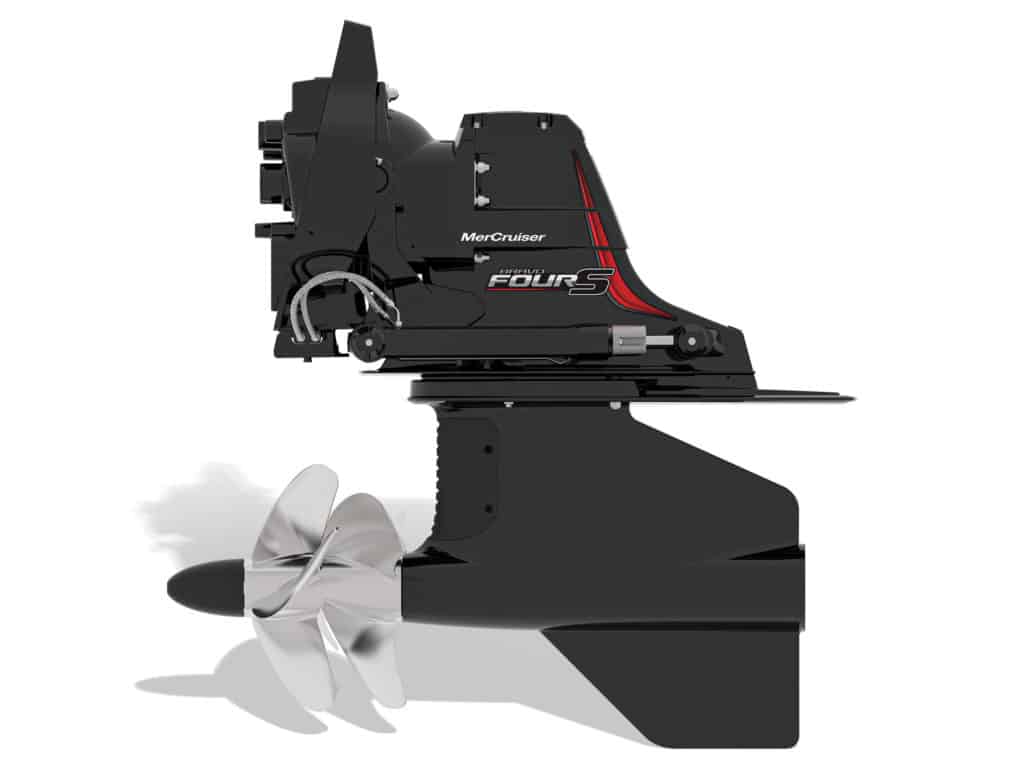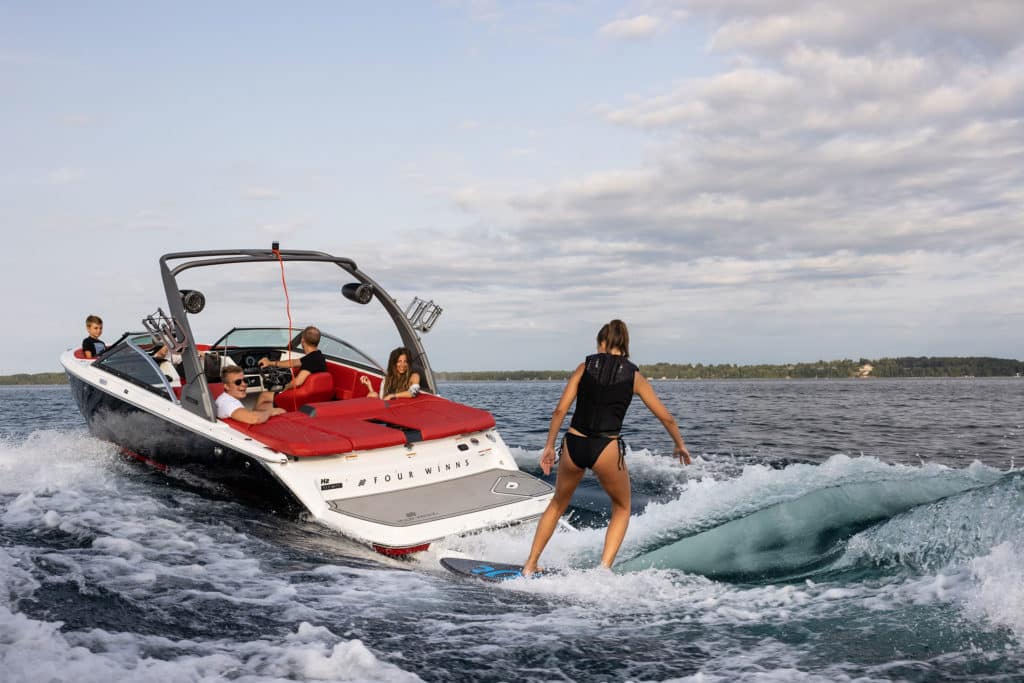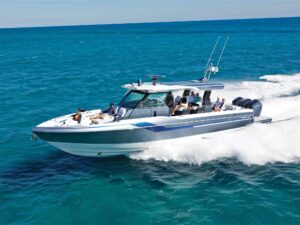
Wakesurfing continues to ride a wave of popularity, and Mercury Marine joined the party last year with the debut of the MerCruiser Bravo Four S forward-facing sterndrive, a response to the market and a volley back to the competing Volvo Penta Forward Drive. Both of these drives exist for one reason: Moving the props under the boat facilitates wakesurfing and makes this fun activity, once restricted to inboard tow-sports boats, available to owners of family runabouts. There is no performance benefit to a forward-facing drive, and neither Mercury Marine nor Volvo Penta would offer one except for the desire of boating families to surf.
Following our test of a new Four Winns H2 with the Bravo Four S, Dave Waldvogel, Mercury’s drive systems engineering manager, and Jeff Reifsnyder, Mercury’s manager of hydrodynamics, discussed the design of the Four S drive.
Managing the hydrodynamics of a drive with forward-facing, contra-rotating props presented a number of challenges. The drive strut—the portion of the housing between the anti-ventilation plate the gear case—needs to be shaped to resist cavitation. We usually associate cavitation with propellers. It’s a phenomenon in which low pressure causes the formation of vapor-filled bubbles, which suddenly collapse when subjected to high pressure, causing miniature shock waves that can eat away a hard surface. The effect of cavitation can be seen as worn paint and pitting on the face of a prop blade.
“On the Bravo Three, pre-stream water flow is the same as boatspeed, so cavitation is not often an issue,” Reifsnyder says. “The forward-facing props of the Bravo Four S accelerate the flow of water over the strut, doubling the rate of flow. We use CFD (computational fluid dynamics) software and underwater imaging to shape the strut to eliminate any low-pressure areas that could cause cavitation. For example, cooling water inlets are placed on the leading edge of the strut.”
The props were designed for towing. Reifsnyder explains that, in theory, the torque load is split evenly between contra-rotating props, but in reality, that load changes with boat speed, and it’s impossible to idealize prop load for all speeds. Mercury has designed Bravo Three props to shift the load bias slightly to the leading prop at maximum boat speed, and as boat speed decreases, the load balances and then shifts to the rear prop. The Bravo Four S drive was expected to spend a lot of time pushing a wall of water at low speeds while receiving a ton of torque from the engine. The bias was adjusted to move more load to the front prop at low speeds to better balance the workload.
The front propeller has four blades, and the rear propeller has three. The four-by-three-blade design eliminates pressure spikes from paired blades passing each other, and so improves noise vibration harshness (NVH) because those pressure spikes would bounce off the boat’s bottom.
Read Next: Four Great Wakesurfing Tips
A disadvantage of the forward-facing drive is its inability to trim above the boat’s bottom, whether for shallow-water navigation or trailering. The props—which cost $2,100 a pair to replace—will be the first thing to hit a speed bump, so be careful.
The bottom line: Mercury’s Bravo Four S offers sterndrive surfability with very little compromise.

Four Winns H2 Surf
Powered by a 300 hp MerCruiser 6.2L V-8, our 22-foot Four Winns H2 Surf test boat topped out at 45 mph at 5,000 rpm with a 2.2-to-1 gear ratio and a 24-inch-pitch propset. Time to plane was about 4.3 seconds. The boat seemed to take a little less trim than it might with rear-facing props, but it handled well. With the props always away from the exhaust, control around the dock was excellent. With a surf tab dropped and 1,345 pounds of water in the bags, the H2 produced a solid surf wake, and the boat handled with confidence.








